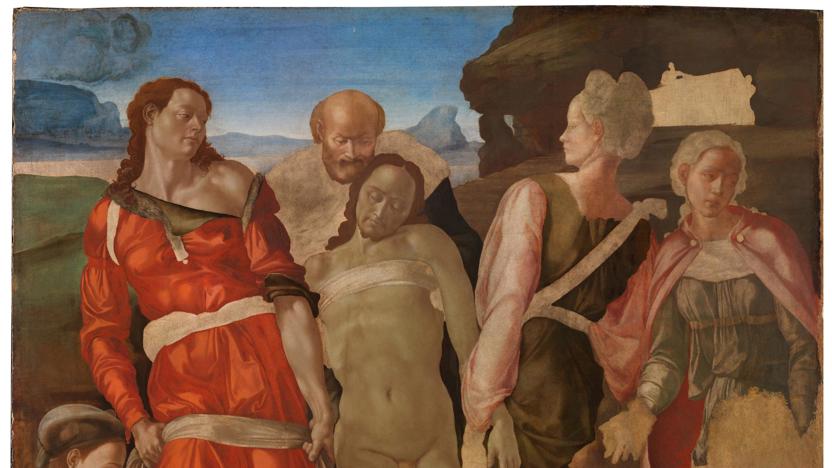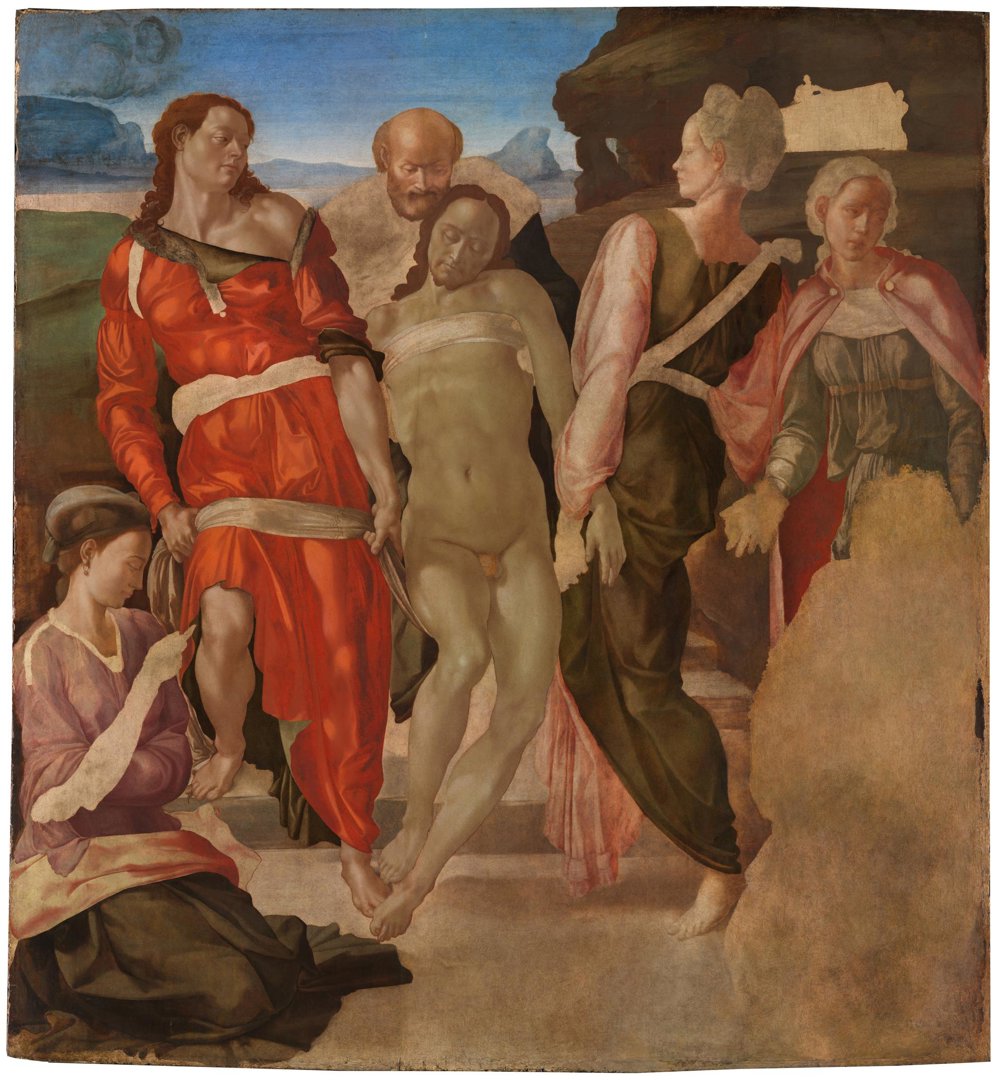Michelangelo's 'The Entombment'
Audio description
This is a description of 'The Entombment' , or ‘Christ being carried to his Tomb’ by the Florentine artist Michelangelo Bounarroti, painted in about 1500. Oil on wood, the painting is roughly a metre and a half square. It is in a carved dark wooden frame, with gold detailing.
Six tall, pale figures surround Christ. Some support his naked body, while others kneel. He is being carried vertically up steps to a tomb in the distant background, set within a dark rocky outcrop, on an olive-green hilly landscape. Misty blue hills in the distance fade into blue sky at the top left. The painting feels monumental, the figures arranged closely, almost completely filling the composition. They are in sharp relief, more like carved stone than painted flesh.
The painting is unfinished, many areas where arms, hands and figures should be, shown only as a buff-coloured underlayer of paint, known as a ‘reserve’. This includes the distant tomb, where Michelangelo has scraped away the dark paint of the rocks, leaving a ghostly silhouetted outline of two figures, moving back the stone at the entrance.
There is a feeling of solemnity as we are confronted, face on, with the lifeless, ashen body of Christ, portrayed as perfect, with no sign of injuries. His eyes are peacefully closed, head lolling to the right, arms limp by his sides. His body twists slightly – torso leaning left, while knees fall to the right.
A balding man with a grey beard and fur cape is behind him. This may be Joseph of Arimathea, who donated his own tomb for Christ, or Nicodemus, who helped lower Christ from the Cross and prepare him for burial. He stoops to support the body, his hands under the armpits. Two younger figures stand on either side. They are lifting Christ on two long lengths of white winding cloth, which are tied around their waists and shoulders, suspending his body between them. They lean away, straining to bear Christ’s weight. One rope-like strap passes under Christ’s thighs, a second strap crosses over the chest, threading under his arms.
The muscly strap-bearer on the left has long wavy brown hair, and is dressed in a floor-length, red tunic. He is probably Saint John the Evangelist. The woman opposite may be Mary Cleophas, who looked after Christ at the end of his life. She is shown in profile, in an olive-green dress over a tunic with long pink sleeves. Her hair is unpainted.
Another of the Three Marys, perhaps Mary Salome, stands on the far right of the painting, dressed in grey with a pink cloak pinned to her shoulders.
Two figures placed symmetrically in the bottom corners of the painting, kneel on the ground. On the left, it is likely to be Mary Magdalene. In a pink tunic and brown skirt, she is staring down sorrowfully at something in her hand, which is unpainted. An earlier drawing shows it was intended to be the crown of thorns and nails with which Christ was crucified.
Her counterpoint, bottom right, is entirely unpainted. This was probably intended to be Christ’s mother, the Virgin Mary, kneeling in prayer. Michelangelo would have needed ultramarine blue to paint the Virgin’s mantle, made from the rare and expensive semi-precious stone lapis lazuli. Perhaps this costly pigment had been difficult to obtain?
The painting was probably made for a funerary chapel in the church of Saint Agostino in Rome. It was left unfinished because Michelangelo went to Florence to claim the great block of marble, which he would sculpt into his celebrated statue of David.


